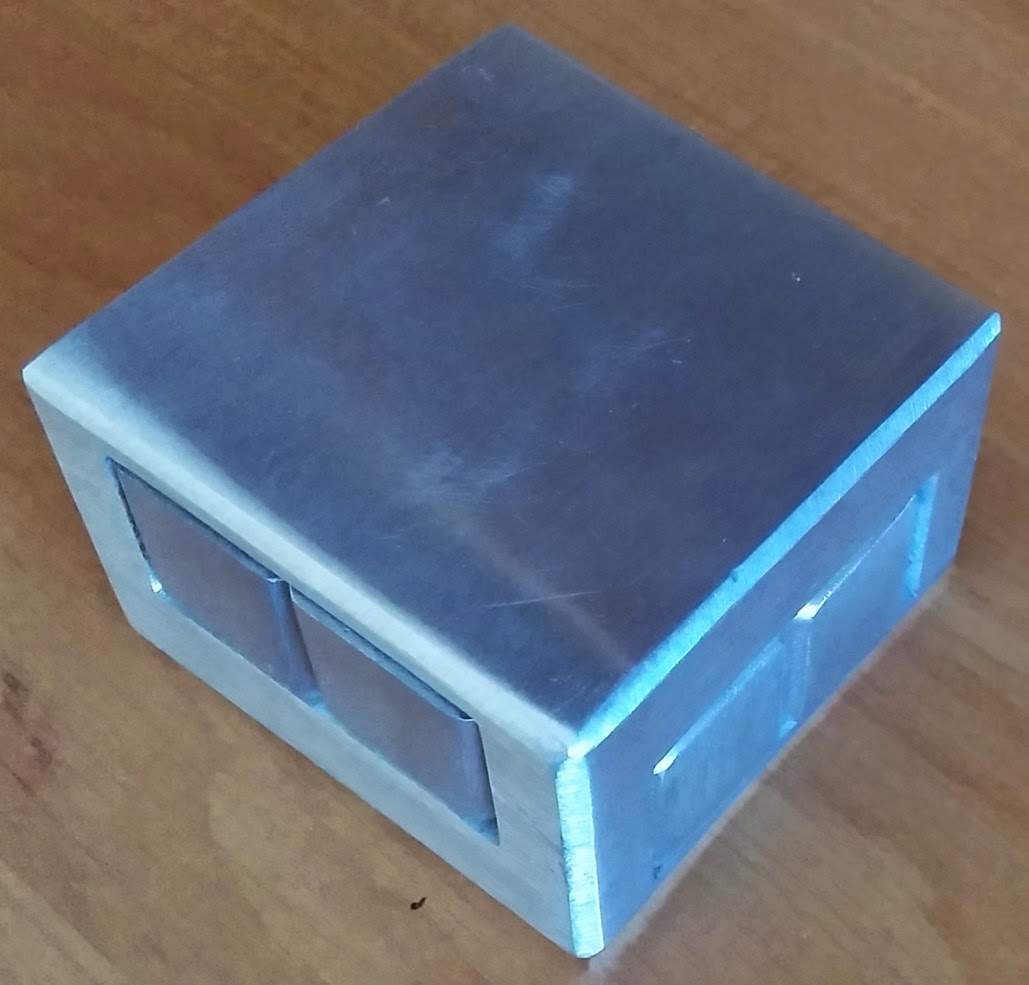Designed by Vesa Timonen, who is also the designer of "Cast Cylinder", which I have already reviewed here, "Cast Donuts" is one beautiful, original and unique puzzle! As its description says:
Cast Donuts has beautifully shaped rings that look like 2 donuts intertwined together.
Try solving the puzzle by imagining the inner structure and using each of the rings' division lines as a hint. You will be pleasantly surprised by the unique movements needed to separate the rings. This puzzle is a masterpiece in design and concept.
I could not disagree at all. The first time I saw this puzzle in real, I thought it was so small. Surely by looking at the image only, be it online or somewhere else, one cannot get a full idea of the puzzle. Not until they have it in their hands. Well, I imagined this one a bit different, but when I saw it on a stand in a bookshop, I was amazed for the second time (the first being when seeing it online when it was published in 2012). Then, I had no doubts - I should have this marvelous piece of art.
As per Hanayama's rating, "Cast Donuts" is level 4 out of 6. Its difficulty is 2, while its design and inspiration index* is 5, which gives this average of 4. My personal ratings in these are the same:
Idea: 5
Implementation: 5
Difficulty: 2
Which leaves the experience. Having the freedom to implement the solution in your way makes "Cast Donuts" very pleasant and fun, achievable and solvable by anyone. I mean that there are some steps which are needed to do the solution, but it is not mandatory to do them in any particular order or way. It is not like "Cast Quartet" or "Cast Vortex" for example, which are very precise and strict in the way the solution is done. This makes the puzzle suitable both for beginners and advanced puzzlers.
What I like most about the puzzle is namely the assembled version of it. It is very appealing and attractive. And the material is great - that black color which is present only on a few Hanayama puzzles is my most favourite. I think all 5 puzzles, which have it so far, are among my most favourite Cast puzzles (if not all in Top 10, then maybe in Top 20). I wish there were more great puzzles with this color/material.
The rest of my ratings for "Cast Donuts" are:
Experience: 4
Overall: 4
* Hanayama assess puzzles in these two indexes and gives one average level based on them

















































